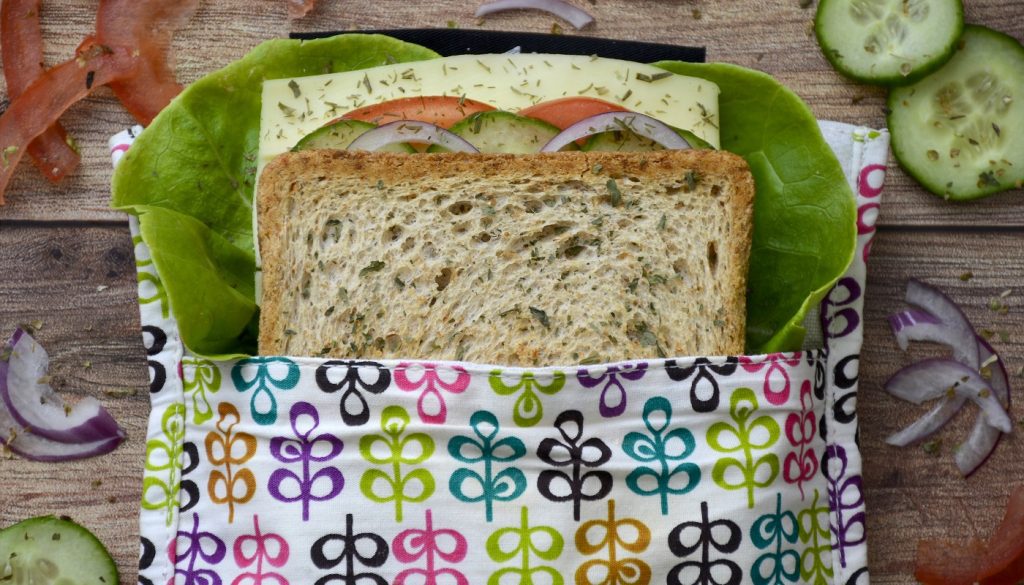Everyone needs to eat. Figuring out how to feed the world’s population while still protecting the environment is no small task, but a few innovators are up to the challenge. What does sustainable food look like?
Read on to learn more about the problems with food sustainability and possible solutions.
The world’s sustainable food problem
The crisis surrounding sustainable food can be divided into a few categories. There are problems at every step of food production and consumption.
Food production emissions
How we grow food is a big contributor to greenhouse gas emissions. From the fossil fuels that farm machinery uses to the chemical runoff of fertilizers and pesticides into waterways, there are lots of ways our farming system is bad for the environment.
Agriculture also takes up lots of physical space — 50% of all habitable land on the planet is taken up with farmland. Not only does this take away habitats for native ecosystems, but fields full of crops bring other detriments to the environment.
- Farmland contributes to deforestation and other ecosystem destruction, taking away some of nature’s biggest potential for carbon absorption
- Monoculture, or raising only one type of crop, is damaging for pollinators who need flowers all season long
- Crops have shallow roots and do little to help anchor the soil against erosion
- Synthetic fertilizers are often overused and can runoff into waterways, causing imbalances
Packaging and transportation emissions
You may be surprised to learn that the supply chain (processing, packaging, and transporting) of food is actually one of the smallest contributors to food’s overall carbon emissions. Packaging makes up just 5%.
It’s easy to overestimate how important packaging is since we interact with it a lot at the consumer end — we’re the ones who have to throw the plastic away, after all. But hopefully, that puts into perspective just how detrimental our current farming practices are to the environment.
Packaging isn’t unimportant when we’re talking about sustainable food, but it might not be the top priority.
Massive food waste
Food waste is any food that doesn’t get eaten. This includes food that was prepared and left on the plate, food that is spoiled before it can be eaten, and parts of foods considered to be inedible like rinds and skins of produce.
According to an EPA estimate, 63.1 million tons of food waste were generated in 2018, which accounts for 21.6% of all municipal solid waste. On top of that, the USDA estimates that one-third of all available food produced in 2010 was not eaten.
Wasting this amount of food isn’t just inefficient, it’s costly to the environment. Throwing food away is a waste at every level of food production:
- It wastes the energy and resources that went into producing the food,
- It wastes the resources put into packaging and transporting the food,
- It takes away the opportunity for someone to have eaten the food, and
- It removes the opportunity for that food to bring nutrients back into the soil through composting.
If things weren’t bad enough, food that is forced to decompose in an anaerobic environment (like a landfill) emits methane gas. Cutting back on food waste will be an essential part of addressing the sustainable food crisis.
7 things you can do for a more sustainable diet
Like many problems with the climate crisis, a big factor in sustainable food is the need for structural change. But that doesn’t mean individual action isn’t important. Here are a few changes you can make to your diet to be more sustainable.
1. Eat local
When you buy local produce from your farmer’s market, not only are you supporting area farmers, but you also cut back on the emissions generated from transporting your food across the country (or the globe).
An extra bonus is that most farmer’s markets don’t package the food they sell, so you can bring your own bags and cut back on plastic packaging waste!
Find a farmer’s market near you here.
2. Cut back on meat and dairy
Raising farm animals is a huge contributor to climate change. It’s inefficient, it contributes to deforestation, and some livestock emits methane. Even skipping meat for a meal or two every week is a big help.
3. Eat what’s in season
When you buy out of season produce, it was likely stored in a refrigeration unit for months before making it to your table. In-season produce requires less energy to produce since it doesn’t require artificial heat and light to ripen.
Check out this guide from the USDA to see what’s currently in season.
4. Buy with meals in mind
One way to prevent food waste in your kitchen is to plan ahead when buying produce and other perishable foods. What meals will you use each item for? When everything you buy has a specific spot on the menu, you’ll be less likely to let food spoil.
5. Eat more sustainable foods
Consider adding these sustainable foods to your shopping list:
- Fairtrade certified tea, coffee, and chocolate: While Fairtrade focuses primarily on the wellbeing of workers, it also promotes a healthy relationship with the environment by supporting small farmers over large corporations.
- Beans & legumes: These versatile little guys are a great source of protein, which is great if you’re cutting back on meat. But they also play an important role in farming- they actually return nutrients to the soil when farmers cycle through them with other crops.
- Rope-grown mussels: Mussels are easy to cultivate because they eat naturally occurring nutrients in the water and don’t need chemical fertilizers to survive. To make it even better, they even improve water quality by filtering it as they eat, which helps prevent algae blooms.
- Oat milk: Cows are a big source of methane, and cutting back on our bovine reliance is an important step in fighting climate change. Oat milk uses one-eighth of the water it takes to make almond milk, and it tastes great!
6. Compost your scraps
You’ll inevitably generate some food waste, whether it’s a banana peel or a funky tomato you forgot about in the back of your fridge. Composting is a great way to cut back on how much trash you generate while creating something valuable.
If you don’t have a garden or your city doesn’t have an industrial compost facility, you can still compost! Check here to see if there are composting services in your area.
7. Grow your own
If you have the time and space, growing your own produce can be incredibly rewarding (and it puts that compost to good use!). What could be more sustainable than eating food that you’ve grown yourself?
Check out this guide to growing food, which includes details about container gardening if you don’t have a backyard!
6 Sustainable food innovations rocking our world
All hope isn’t lost. Check out these amazing trailblazers in sustainable food!
1. MittiCool
This Indian company developed a refrigerator that operates without electricity. The clay unit works by storing water inside, which filters through the pores in the clay as condensation. This keeps the inside of the box cooler than the surrounding room.
2. Marrone Bio Innovations
This company is developing new technologies for more sustainable crop protection as an alternative to pesticides. They utilize microorganisms to manage pests naturally, which eliminates the detriments associated with chemical pesticides and fertilizers.
3. Tipa
Tipa is an Israeli company leading the charge in sustainable food packaging. They developed a flexible compostable packaging that behaves just like conventional plastic, and it also leaves no remnants or microplastics after being composted!
4. Groasis
This company began in Holland with a lily farmer who saw how wasteful farming can be, especially with water. Groasis’ technologies allow farmers to grow trees and other crops in areas where it would otherwise be impossible, and with a fraction of the water.
5. Beewise
This company is making smart homes for bees- really! Their AI technology allows beekeepers to monitor their bees’ health and help them more efficiently if they’re sick. This streamlines the beekeeping process and cuts back on premature bee death.
6. BioTrans Nordic
This Danish company developed a food waste solution for industrial kitchens. Their mechanical system recycles food waste into fuel to be used for heat and electricity. Since it eliminates the need for the waste to be transported to a different facility, it cuts down on overall carbon emissions.
Conclusion
Just like every other issue with climate change, sustainable food is complicated. But with empowering individual action and exciting innovations, we can work together to address the crisis.
To learn more about sustainability in the kitchen, check out our eco-friendly kitchen products guide, our zero waste meal prep guide, and our sustainable kitchen utensils guide.





